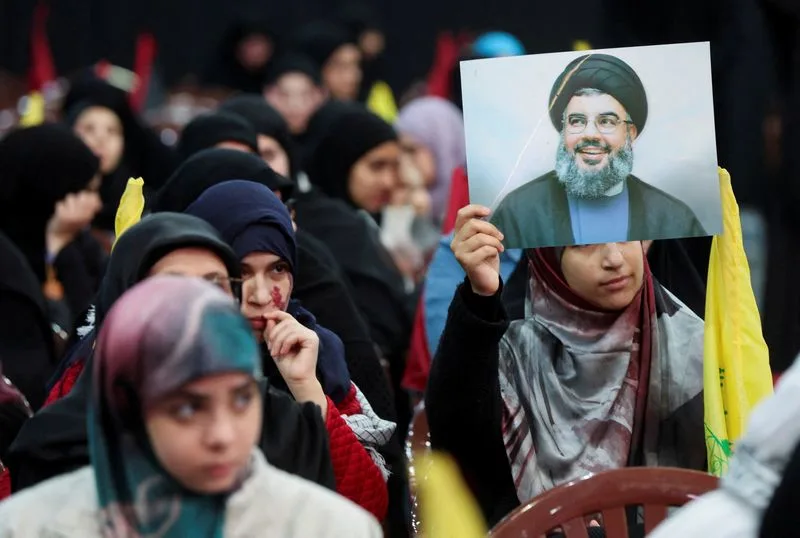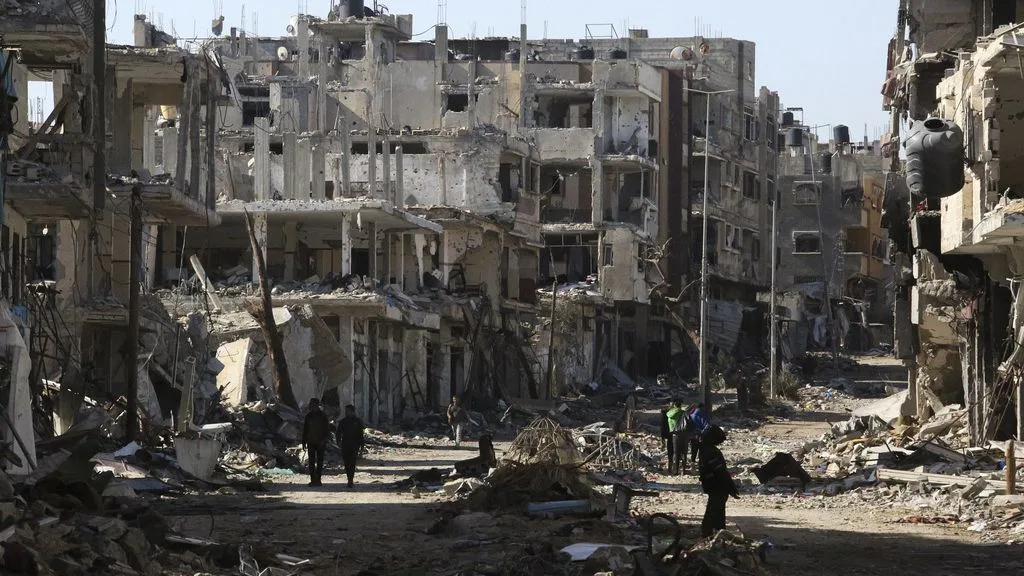Four and a half months after the fighting began, the Israeli Prime Minister has finally made public a draft of his vision for Gaza after the war finishes.
Benjamin Netanyahu has done so because global opinion, especially in Washington, is fast turning against him and he is trying to claw back some control.
The brief document, which was presented to the Israeli Security Cabinet on Thursday night and released to the media, is little more than a page long. Netanyahu’s plan is divided into three sections: the immediate, short and long term.
Middle East latest updates
In the immediate term the IDF would continue to fight Hamas until the group was militarily destroyed: it’s clear then, that Mr netanyahu has no intention of finishing the war anytime soon.
Once achieved, if ever achieved, that would be followed by handing over governance in Gaza to “local officials with administrative experience” but who’ve had no previous affiliation with Hamas or other armed groups.
Netanyahu doesn’t elaborate on who that may be, presumably fully aware that few people fitting that specific description could be found given that Gaza has been governed by Hamas since 2006.
It’s not hard to imagine a future scenario then, when the Israeli PM claims that despite their best efforts, they’ve been unable to find anyone in Gaza they can trust to take over control.
UNRWA, the United Nations organisation that runs services in Gaza, would be closed down and a buffer zone established inside Gaza post 7 October would remain, according to the plan, despite US opposition.
Israel would also maintain security control over Gaza and all of the West Bank.
Finally, the restoration of Gaza would only begin once the strip had been “deradicalized” and would be funded by countries “acceptable to Israel” but not Israel itself.
But if Israel wants the likes of Saudi Arabia or the UAE to plough money into rebuilding what Israel has destroyed, then it will likely come with firm conditions, and that will almost certainly include a role for the Palestinian Authority (PA) and a path towards an independent Palestinian state.
Cynics will be wary. Netanyahu, deeply unpopular in Israel, is under increasing pressure internationally.
In recent weeks, the US and UK have made noises about recognising Palestine as an independent state.
This prospect has been dismissed by Netanyahu, who has always been opposed to a two-state solution.
Ironically, Netanyahu has said on multiple occasions in recent weeks that a Palestinian state cannot be declared unilaterally without Israel’s approval, and yet his “day after” document for Gaza makes no mention of consulting with the PA about the future for Gaza.
Netanyahu’s plan is so brief that it could be seen as an insult to those who have been urging him to take it seriously.
It looks like an attempt to buy time, to give the impression he is taking things seriously, but really just making space for him to continue the war and delay what many in Israel, and around the world, believe is inevitable: his removal from office.
Israeli Prime Minister has unveiled a plan for post-war Gaza that drew criticism from key ally the United States and was rejected by the Palestinian Authority and Hamas on Friday.
The new plan came after airstrikes targeted homes in southern Gaza, and as an Israeli delegation arrived in Paris hoping to “unblock” truce discussions.
Netanyahu’s plan envisages civil affairs in a post-war Gaza being run by Palestinian officials without links to Hamas.
It also lays out that, even after the war, the Israeli army would have “indefinite freedom” to operate throughout Gaza to prevent any resurgence of terror activity, according to the proposals.
The plan was swiftly rejected by the Palestinian Authority and drew criticism from the United States.
US National Security Council spokesman John Kirby said Washington had been “consistently clear with our Israeli counterparts” about what was needed in post-war Gaza.
“The Palestinian people should have a voice and a vote… through a revitalized Palestinian Authority,” he said.
“We don’t believe in a reduction of the size of Gaza… we don’t want to see any forcible displacement of Palestinians outside Gaza and, of course, we don’t want to see Gaza dominated or ruled or governed over by Hamas.”
Asked about the plan during a visit to Argentina, US Secretary of State Antony Blinken said he would “reserve judgement” until seeing all the details, but said Washington was against any “reoccupation” of Gaza after the war.
Senior Hamas official Osama Hamdan dismissed Netanyahu’s plan as unworkable.
“When it comes to the day after in the Gaza Strip, Netanyahu is presenting ideas which he knows fully well will never succeed,” Hamdan told reporters in Beirut.
Paris delegation
As aid groups warned of an increasingly hopeless humanitarian situation in the Hamas-run territory, an Israeli delegation led by David Barnea, head of the Mossad intelligence agency, arrived in Paris for a fresh push for a deal to return the remaining hostages.
The war started after Hamas’s unprecedented October 7 attack which resulted in the deaths of about 1,160 people in Israel, mostly civilians, according to an AFP tally of official figures.
link: https://uk.yahoo.com/news/netanyahus-gaza-plan-appears-attempt-150300375.html






